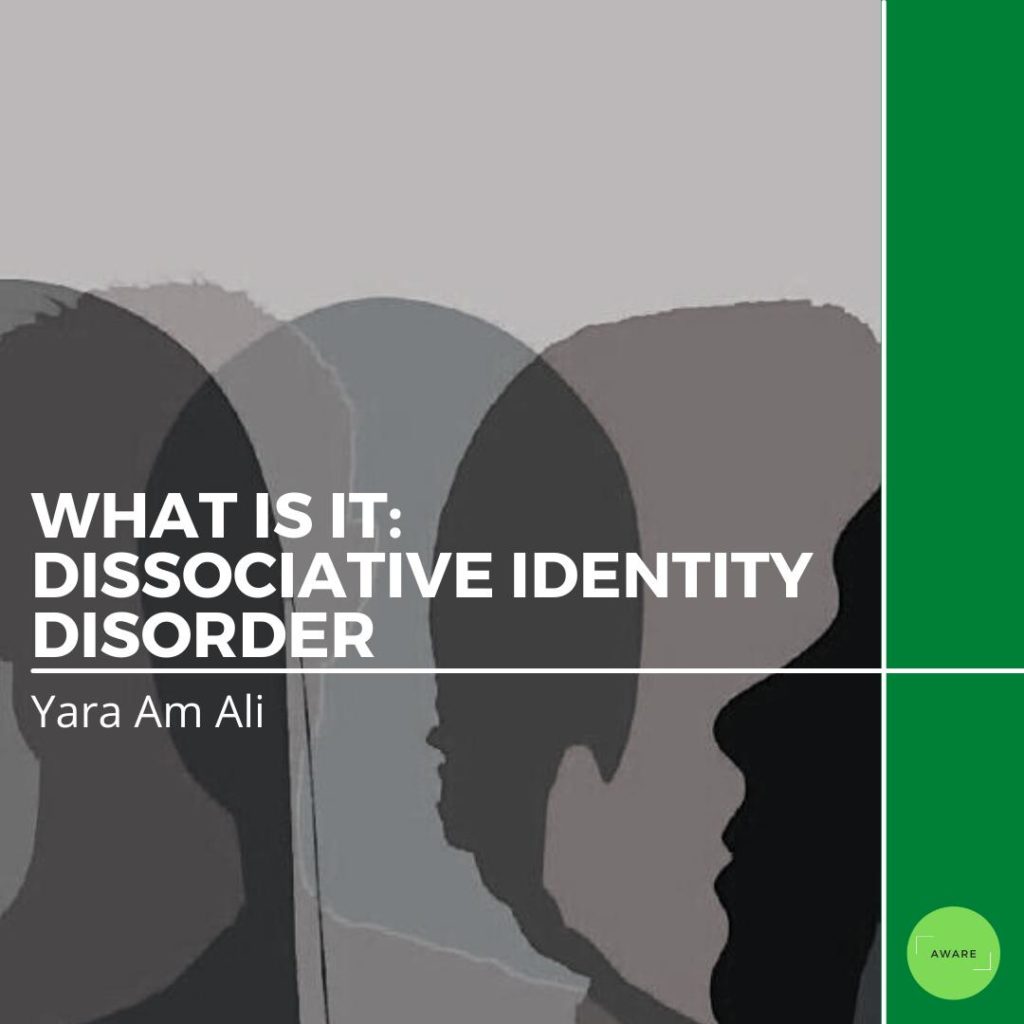Dissociative Identity Disorder (DID), previously referred to as Multiple Personality Disorder, is a mental disorder characterized by having two or more separate identities/personalities/alters. Each identity has its own traits, characteristics, interests, personality, background, gender, etc. When one identity from the system comes forward, they experience the body and reality. When they retreat, it leaves the host and other alters with memory gaps and possible hallucinations.
A “system” is the most common used word to describe the inner world of a person diagnosed with DID. It consists of the host, being the person born with the body, as well as the alters, or the alternate identities, who develop at different points of the life of the host. Some systems or hosts have high insight, where the individual is aware of what is going on with them and seeks professional help to learn more about their system, work on healing traumas, and receive treatment for other possible comorbid mental disorders such as depression and anxiety. Other systems may have low insight, and switching alters may occur unknowingly due to stressors, which may lead to significant distress due to the dissociative amnesia associated with the disorder.
Diagnostic Criteria
The diagnostic criteria of DID will help us get a clearer idea of what it entails. It is important to note that, usually, a diagnosis of DID takes a relatively long time, for accuracy purposes. The criteria is as follows –
- Two or more distinct identities or personality states are present, each with its own relatively enduring pattern of perceiving, relating to, and thinking about the environment and the self.
- Amnesia must occur, defined as gaps in the recall of everyday events, important personal information, and/or traumatic events.
- The person must be distressed by the disorder or have trouble functioning in one or more major life areas because of the disorder.
- The disturbance is not part of normal cultural or religious practices.
- The symptoms cannot be due to the direct physiological effects of a substance (such as blackouts or chaotic behavior during alcohol intoxication) or a general medical condition (such as complex partial seizures).
Different personalities may play different roles in assisting the individual in dealing with the challenges of life. DID develops due to “overwhelming experiences, traumatic events, and/or abuse occurring in childhood.” This is because when a child is developing, they are forming a cohesive sense of self. However, when exposed to early childhood trauma, this sense of self does not form cohesively, and alters develop as a defense mechanism to split from reality and protect the child from the distress. When a patient is first diagnosed, for example, there are usually 2 to 4 personalities present. After that, there are an average of 13 to 15 personalities who emerge during treatment. A quick transition from one alter or personality to another is caused by environmental stimuli or life experiences.
Treatment
DID has no known cure. The condition will affect the majority of people for the remainder of their life. However, combining therapies can help alleviate discomfort. You can learn to regulate your conduct better. You may improve your performance at work, at home, and in your community over time. While there is no medication or formal evidence-based therapy approach specific for treating DID, the therapeutic process depends on the case and mainly focuses on providing talk therapy to identify triggers, work on coping skills, work through trauma, and aim to “fuse” the multiple alters or personalities into one – although this might not be the end goal of every client. Additionally, hypnotherapy is an option to help access repressed trauma and memories, so the client is aided with processing them and working on what behaviors arise from such trauma. Moreover, adjunctive therapies such as art or music therapy have also shown to be helpful with coping and connecting parts of their mind that they have shut off in order to cope with trauma.
Resources
These following links provide more information on DID as well as an insight to the lives of people who live with DID.
YouTube Videos
- I spent a day with MULTIPLE PERSONALITIES (Dissociative Identity Disorder)
- What It Is Like To Live With Dissociative Identity Disorder (DID)
YouTube Channels
